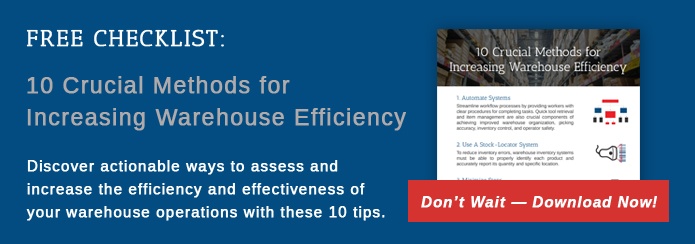 Improving warehouse efficiency can be done quickly and easily with the help of the right warehouse management software.Warehouse management software offers a unique opportunity for you to review your processes as a single cohesive workflow and make improvements where needed. Here are five of the best practices for improving warehouse efficiency:
Improving warehouse efficiency can be done quickly and easily with the help of the right warehouse management software.Warehouse management software offers a unique opportunity for you to review your processes as a single cohesive workflow and make improvements where needed. Here are five of the best practices for improving warehouse efficiency:
- Measurement: Measurement is the most important tool that warehouse management software has to offer. If your warehouse is struggling but you don't know why, you need to measure the actual performance at each stage of your process. Many companies find themselves trying out many different procedures one after another, looking for something that works for them, but they have no good way of seeing what is and isn't creating results. The truth is, you can't fix something if you can't compare your new results to the old.
- Prioritizing: Your warehouse management system can effectively prioritize orders by shipping date as well as prioritize your inbound product for put away. This means that the products in highest demand can quickly move from your docks onto shelves and subsequently into your picker's bins. Products in lower demand can wait to be put away or can be stored in locations that are out of the way until they are needed. This way the majority of your time is spent on the orders and products that are most important.
- Routing: Often, businesses seek to improve their processes without having a full picture of what that looks like down on the warehouse floor. The end result is products that cross paths multiple times, or products that need to be physically handled and moved over and over to reach their final destination. Warehouse management software will help you reduce the number of "touches" required to complete each order by cutting excess steps out of the process and routing employees so that they are not repeatedly retracing their steps.
- Creating Ongoing Opportunities: Your warehouse management software enables you to learn from your business's yearly performance. It tracks trends and makes projections based on previous data. By collecting all of this information automatically, it opens up the possibility for ongoing incremental changes. Ideally, you will be able to make many small improvements, test them for viability, and then move on to the next project, as opposed to making improvements in large bursts and then sitting back until things start to fail again.
- Simplifying: Whether it means adding new technology or reducing the amount of paperwork flowing through offices, warehouse management software is there to help you simplify everything you do. It integrates well with ERP software to provide you with a well-rounded communications platform internally and externally. It also integrates with technologies like RFID and equipment like conveyors and automated storage and retrieval systems (AS/RS) such as carousels and VLMs, which simplifies processes on the ground. The less work you are doing and the more work the computer handles, the more efficient you will be.
By using warehouse management software to bring new controls into your business, you will begin to see improvements in productivity and efficiency. Warehouse management software not only takes over basic processes throughout your operation, but also enhances the resources you already have in place. As you begin to make changes, your warehouse controls solutions will offer you a strong mechanism for tracking progress and open up unlimited potential for ongoing improvements as you continue to grow.




